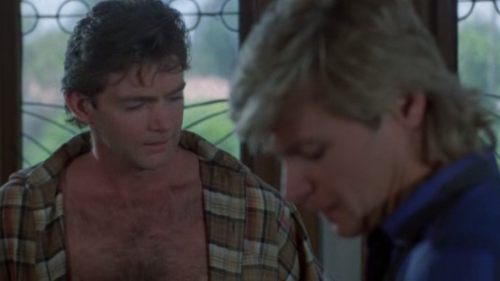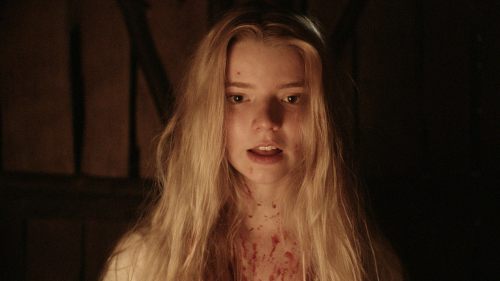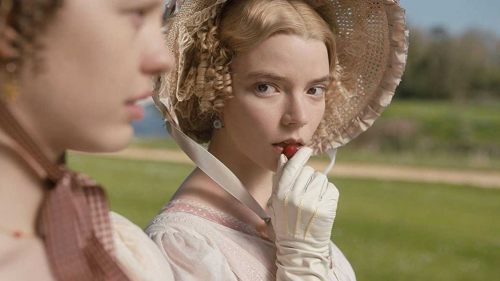Queer Underworld: THE WITCH (2015)
It’s a common adage that, in fiction, the monster is never just a monster. Horror, science fiction, and fantasy are the venues through which we explore ideas through metaphor and allegory, sometimes unintentionally through the lens of an audience who connects with a work’s themes in a manner specific to them. Such is the case with all manner of LGBTQ cinema, which has often relied on metaphor to smuggle queer themes into cinemas or been subject to queer interpretations after the fact. We at Birth.Movies.Death want to give those queer readings of genre films a voice. This is Queer Underworld.
If you’re a member of the LGBT community, growing up in a religious household has the potential to leave you with some baggage. I was raised Catholic, but thankfully my family seemed to get more out of the ritual than the dogma, so while I was certainly subjected to some of the Church’s institutional homophobia and spent some time reckoning with those teachings which I had internalized, I managed to come out of the experience relatively unscathed. However, this isn’t the case for all queer folks who have to reconcile their faith with that faith’s rejection of their sexuality or gender identity, and though it doesn’t necessarily appear as such on the surface, Robert Eggers’ The Witch is demonstrative of how many queer folks come to terms with their apparent sinfulness.
One of the very first scenes of The Witch shows us teenage Thomasin (Anya Taylor-Joy) praying for forgiveness for her inherent, in-born evil. It doesn’t sound as if Thomasin has actually done anything, but the gist of the prayer is that she is a sinful creature that needs to ask for forgiveness, regardless of whether that sinfulness is anything more than an omnipresent sense of guilt and shame. We then see the origin of this ideology: her father, William (Ralph Ineson), who is cast out of their Puritan community for being too much of a religious extremist.
Let that sink in. Too extreme. For Puritans.
And as William takes his family out into the wilderness, it starts to become clear why exactly his beliefs are so extreme, as those beliefs are the only claim he has to any sort of moral superiority or claim as a patriarch and provider. He is a terrible farmer and is incapable of effectively hunting game. He tells his son Caleb (Harvey Scrimshaw) to be complicit in lying to his wife, Katherine (Kate Dickie) when they fail to bring back food on a morning expedition. He steals Katherine’s prized cup to sell it and remains silent as she blames Thomasin. The only power William has over his family is the professed adherence to a religious philosophy that they all are sinners who necessarily must earn their way to salvation. It's a philosophy that William continually fails to live up to as his family picks up the slack that he cannot or will not. None of this is for lack of love, by the way, but it shows how the religious order he enforces is built around shaming his loved ones in order to compensate for his shame in himself.
However, shame and fear are not such distant cousins, particularly as it comes down to witches. After the family’s newborn is stolen away, they start to become suspicious that a witch may be haunting them. In particular, one of Thomasin’s younger twin siblings, Mercy, starts talking about the Witch of the Wood, and as Thomasin boasts of her own witchy status to scare the petulant child, the seed is planted for the other members of her family to begin suspecting that Mercy might, in fact, be a witch.
So let’s pull back for a second and talk about religious boogeymen: namely, them sinful gays. In The Witch, witches are shown to be real, off in the shadows of the wild but no less tangible for being ostracized. In many a religious community, queer folks are either banished for their sinfulness or there just isn’t room for the incompatibility of queer “lifestyle” and religious community, so queer folks just up and leave. With those religious communities, then, is a sense of religiously mandated fear of the other, something to warn children about so that they too may be wary of their sexual deviancy and safeguard themselves against the perils of "gay conversion." Don’t give into those impure thoughts, kids, because doing so will turn your back on your family and condemn you to damnation. Oh, and just to be safe, don’t you dare let any of those gays get near you, in case their sin should rub off on you.
Now, it’s no secret that the Witch of the Wood is dangerous; we see her kill Samuel as part of a ritual to feed her powers. But the majority of The Witch is focused on the paranoia of Thomasin’s family, growing from the seed of Thomasin’s jest proclaiming her unholy powers into a weed that chokes out any love that her parents had for her. Their suspicion and need for income drive them to conspire to sell their daughter into marriage. When Caleb falls bewitched in the process of gathering game to ensure that Thomasin isn’t taken away, their parents suspect Thomasin because she is the one who found him weak and naked in the rain. After Caleb dies, Thomasin is blamed for the twins’ apparent inability to pray for their dying brother, and when she and the twins are locked in the stable as potential conspirators to their devil-possessed goat Black Phillip, Thomasin is decried evil as the lone survivor of that stable’s destruction.
Time and time again, William and Katharine see Thomasin as the threat to their family, either because she is a more manageable threat than the witch who actually threatens them, or because she is a much easier scapegoat to blame than William’s patriarchal impotence. It’s worth noting that Caleb’s death scene proves false William’s assertion that they need to earn their way to the Kingdom of Heaven, as Caleb professes that he is welcomed into Christ’s arms before breathing his last. The faith was not wrong, nor was this family’s desire to embrace God’s love, but the dogma that confused self-loathing for the love of God was the root of their downfall.
So after Black Phillip headbutts William into an overlarge woodpile – a monument to William’s only true skill – and Thomasin is forced to kill her raging mother in self-defense, Thomasin unties her bodice, wipes her face, and waits in her shift until nightfall. Her family destroyed itself rather than accept that Thomasin might not be as inherently sinful as they hoped, and that leaves Thomasin only with time to consider the nature of that sin. Like many a religious outcast, Thomasin embraces the pleasures of Black Phillip’s coven of witches, choosing to live deliciously and gaining the power to see the world. Sure, the Witch of the Wood was monstrous to Thomasin’s family, but their downfall was self-imposed, brought on by paranoia and denial. By writing her name in Black Phillip’s book, Thomasin embraces the supposed sinfulness that her parents told her she needed to repent for, and the result is a happy ending in which she is empowered and finds a new community, presumably free of the same sorts of judgment and self-flagellation.
Thomasin is a relatable figure to ex-religious queer folks, because she takes something she was told was sinful and turns it into the source of her power. She steps away from the patriarchal power structure that reinforced her powerlessness and instead embraces the community that enables her freedom. This is the importance of queer community, as many of us come from backgrounds where we have been pushed out, cast aside, told we were wrong, and denied our reality. By stripping away the dogma, the guilt, and the shame, we achieve transcendence, and if that doesn’t make witchcraft queer as hell, I don’t know what does.



